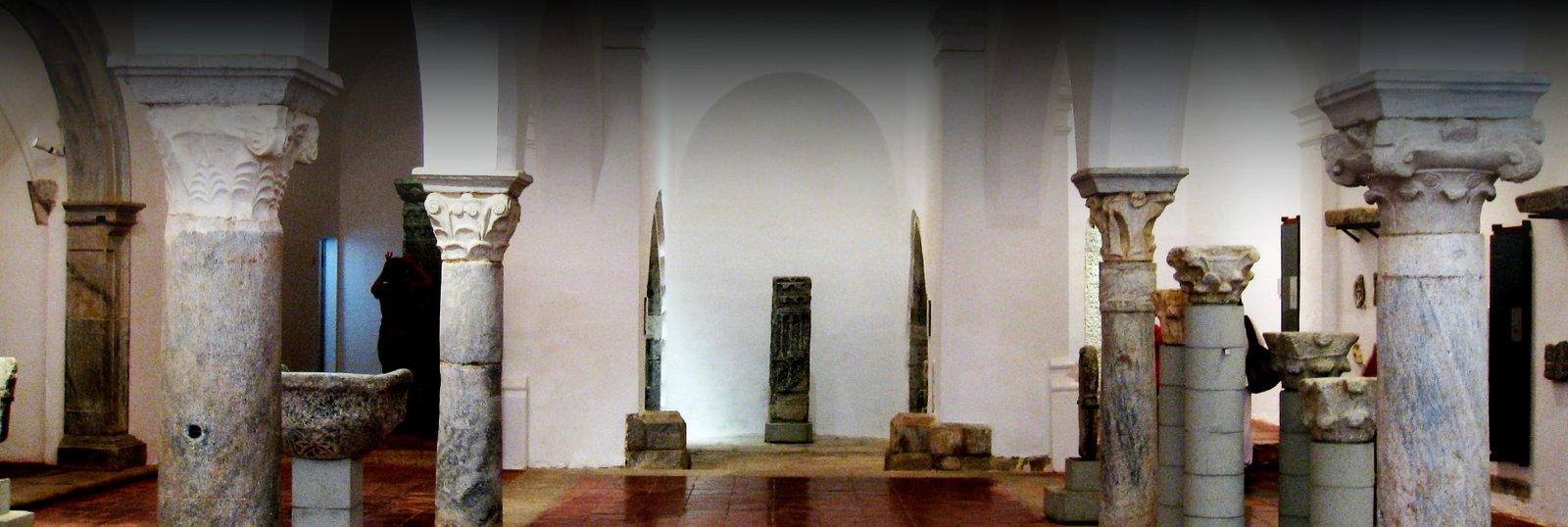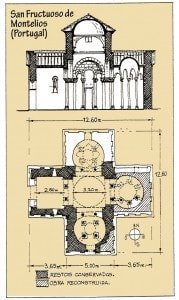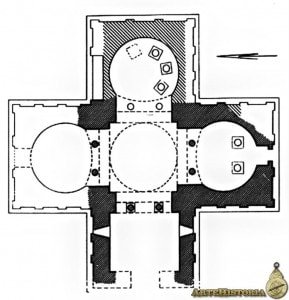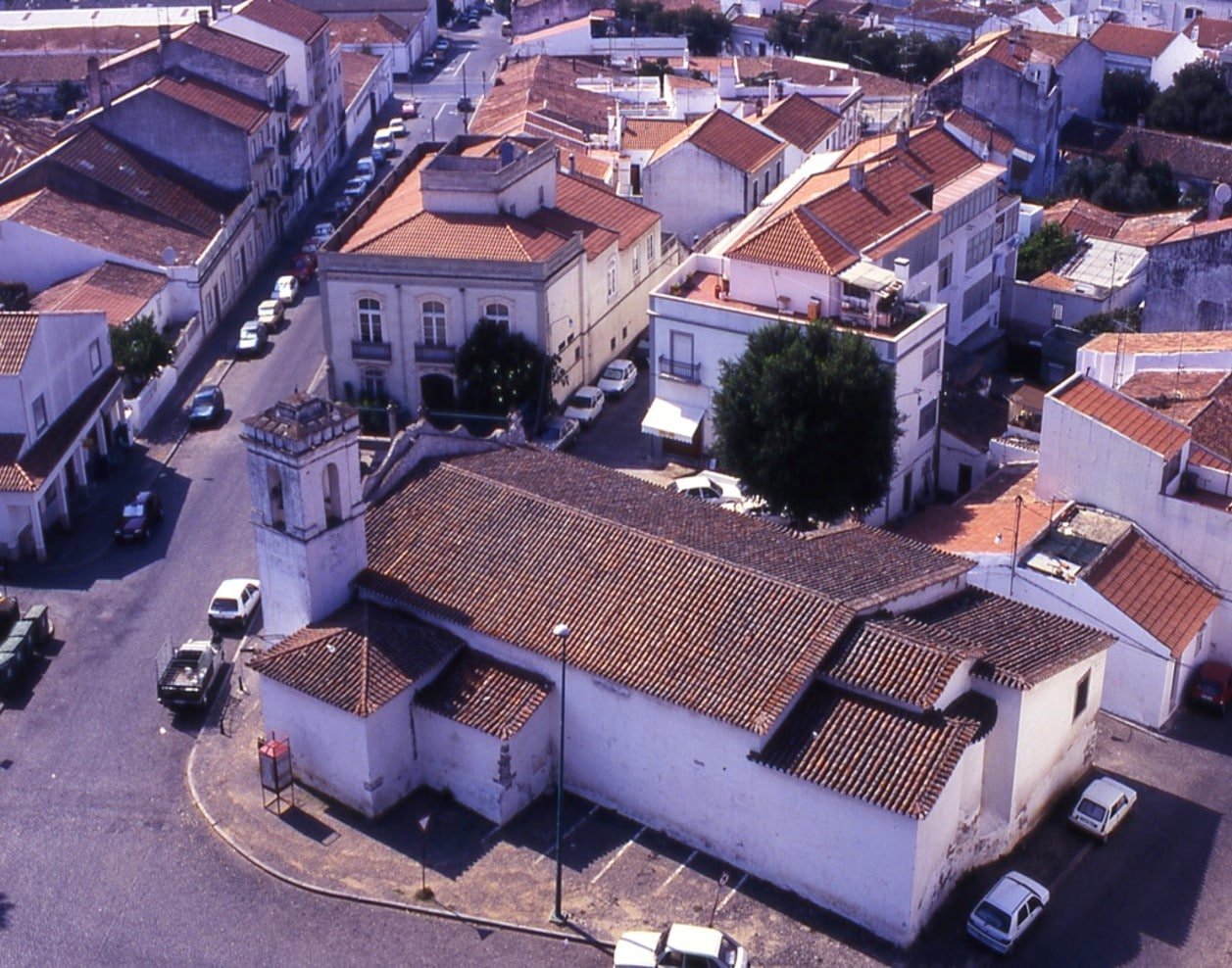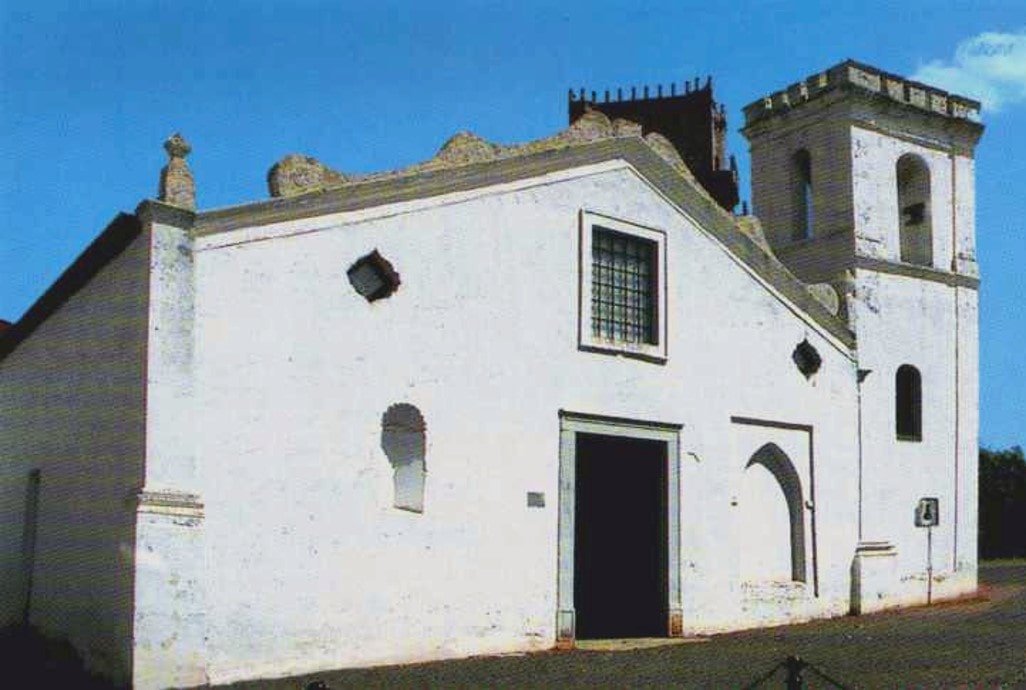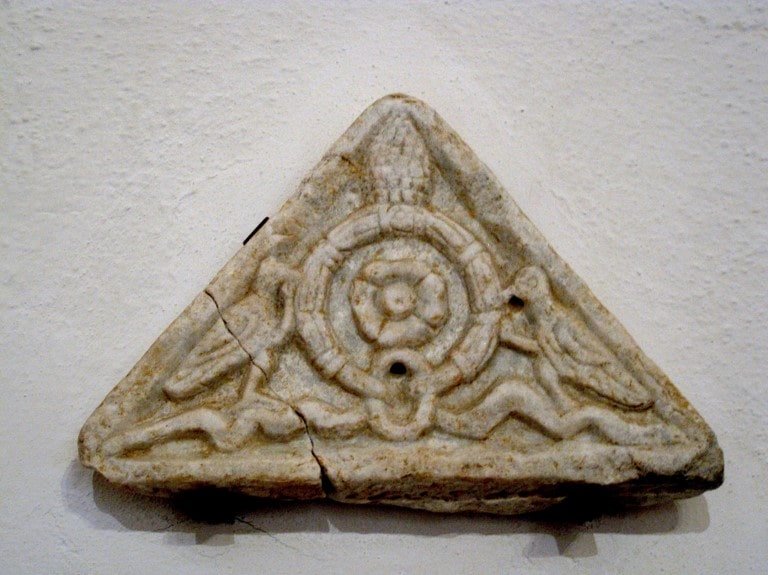Igreja de Santo Amaro
per person
DESCRIPTION AND FORMAL ANALYSIS
With the inauguration of the Visigoth Museum, of the Regional Museum of Beja, at the Santo Amaro Church, fulfilled the aspiration, 40 years old, of several specialists, scholars and local citizens, among which, it is only fair, to mention the name of Abel Viana, who as early as 1940, advocated that it should house the Visigoth City’s Museum.
This nucleus museum graphic project, had as its objective, to recuperate the inner space of the Santo Amaro Church, one of Beja’s more significant spaces, from the historic and architectonic point of view, to expose the Visigoth collection of the Museum, in a systemized manner, establishing thus, an integration between these pieces and the remaining parts of the old Paleo-Christian Basilica.
The sits on top of a roman necropolis, paleo-christian and medieval, that would have been situated as far as and beyond the city’s gates, alongside the way to the North. The first patronage must have been of Santiago, before the XVI century. The Chapel was known as the Lady of the Grace, during the XVII century, and by Santo Amaro in more recent times.
There must have been, in the same locale, one or more previous edifications, but, what is left to-day in a volumetric architecture, is the church, practically constructed from scratch, at the end of the XV century – beginning of the XVI.
Two chapels were constructed during the XVI century, and both are still today standing, one next to the other, on the collateral Southside, and at the end of that century, or at the beginning of the next, is increased, on the collateral North side, another funeral chapel. The works done during the XVIII century, profoundly modified the occidental façade, giving it the aspect it has today. It was also during that time, that the front elevation was altered. As architectonic elements, previous of the XVI century works, we must outline, probably, the small semicircular calotte on the central apse and, mainly the supporting columns of the arches pattern maker lines. The level tablet on the capital, traditionally considered of the Visigoth period, and of the tradition, undoubtedly, of the late previous IX century.
VIRGILIO LOPES
- SANTO AMARO © PHOT. VIRGILIO LOPES
- FACHADA OCCIDENTAL DE LA IGLESIA © PHOT. Museu Regional de Beja
- INTERIOR DE LA IGLESIA, HOY MUSEO ARQUEOLÓGICO © PHOT. ARTEMIO M. MARTÍNEZ TEJERA
- FRAGMENTO DECORATIVO TARDOANTIGUO CUSTODIADO EN LA IGLESIA © PHOT. ARTEMIO M. MARTÍNEZ TEJERA
- FRAGMENTO DECORATIVO TARDOANTIGUO CUSTODIADO EN LA IGLESIA © PHOT. ARTEMIO M. MARTÍNEZ TEJERA
Tour Location
Igreja de Santo Amaro
| Outros monumentos e locais a visitar | Castelo, Villa romana de Pisões, Museu Regional, Museo Jorge Vieira, Museo Episcopal, Arco romano, Núcleo Museológico |
| Herança natural | |
| Recreações Históricas | |
| Festival de Interesse Turísticot | |
| Feiras | |
| Guias Especializados | Yes |
| Guias Especializados | Yes |
| Visitas Guiadas | Yes |
| Acomodações | Beja: Beja Parque Hotel, Pousada Convento de Beja |
| Restaurantes | Beja: Restaurante Dom Dinis, Herdade dos Grous Restaurant |
| Arte | Yes |
| Bibliografia | |
| Vídeos | Youtube |
| Local na rede Internet | cm-beja.pt |
| Monumento ou local a visitar | Igreja de Santo Amaro |
| Estilo | Antiguidade tardia, Medieval, Moderno |
| Tipo | Igreja |
| Época | SS. VII -IX |
| Estado de Conservação | Bueno |
| Grau de proteção legal | Monumento Nacional |
| Endereço para correspondência | museuregionaldebeja@cultura-alentejo.gov.pt |
| Coordenadas | 38°01′03″N 7°51′56″O |
| Propriedade, dependência | Ministério da Cultura |
| Possibilidade de visitas do público em geral ou apenas de especialistas | General Public |
| Necessidades de conservação | |
| Horários e condições de visita | De terça-feira a domingo, das 10:00h às 12:30h e das 14:00h às 17:30h.Encerra às segundas-feiras e seguintes feriados: 1 de janeiro, domingo de Páscoa, feriado municipal de Beja e 25 de dezembro. |
| Valor do ingresso | 2 euros |
| Trabalho de pesquisa em andamento | Good |
| Acessibilidade | |
| Sinalização se está inscrito na rota | Yes |
| Bibliografia | TORRES, CLÁUDIO, Correia, Fernando Branco, Núcleo Visigótico - Museu Regional de Beja, 1993. |
| Vídeos | |
| Sites de informação | museuregionaldebeja.pt cm-beja.pt |
| Localização | Largo de Santo Amaro, Beja |


